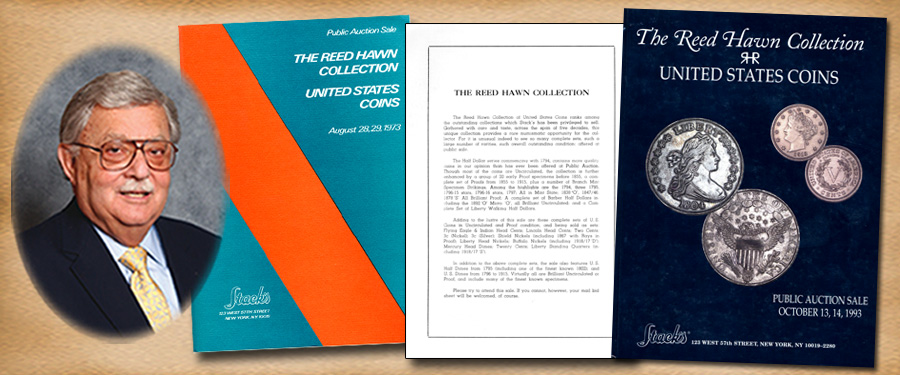
Collecting United States gold coins became very popular in the 1980s and early 1990s. Reed Hawn felt this would be something new to try and as with his other collections he chased rarity and quality.
Historical collections were listed in many of the pedigrees of this collection. Among the famous collection names represented were the Massachusetts Historical Society, Garrett, H.P. Smith, E. Yale Clarke, S.G. Stecler. Donald J. Davenport, Geo. F. Scanlon, Westchester, Winner Delp and many other Stack’s auctions of the 1970s through 1990s. These landmark auctions were great sources for Reed Hawn to select from.
To start with he had a complete set of U.S. gold dollars, many of them the finest known. His collection featured 1849-C, 1849-D, 1850-C, 1852-D, 1853-C, 1854-D, 1855-C, 1855-D, 1856-D, 1859-C, 1859-D, 1860,D, 1861-D, 1870-S, and 1875, These examples were Mint State, and included specimens from collections such as those of Charles Jay. Philip Ward, Grant Pierce, Angelo Turini, Gaston DiBello, R.L. Miles, Stadium-Gardner and George Walton, to mention but a few of these earlier Stack’s sales. These gold dollars had great quality and great pedigrees.
Reed Hawn also liked $3 gold coins. Of the 25 coins offered at this sale, virtually all were purchased from Stack’s including seven Proof examples.
Reed also sought out the higher denominations, first for a type set of those issues. Later he filled in special series he became attracted to. In particular, he had a passion for the coins of Augustus Saint-Gaudens, and developed an extensive holding of this series. Among the $10 rarities he had were both the rolled edge and wire edge varieties of 1907, and also superb Mint State examples of 1908-S, 1909-S, 1911-S, 1915-S, 1920-S, and 1930-A.
His Saint-Gaudens double eagles featured both wire and flat edge 1907s, along with 1913-S in Mint State, 1915 Matte Proof, 1920-S, 1921, 1924-D, 1924-S, 1925-D 1925-S, 1926-D, 1926-S, 1927-S, 1929, 1930-S, 1931-D, and 1932.
Reed Hawn was motivated by the pride of ownership he achieved by finding and purchasing high quality and rare coins. He studied auction sales, price lists, advertising and anything else he could learn from. He was a discrete and selective buyer, and was collecting at the right time to purchase examples from some of the finest cabinets formed during the 20th century.
In the next part of this story, I will discuss how Reed Hawn was an advocate for the hobby and how he worked for the benefit of the collector.





